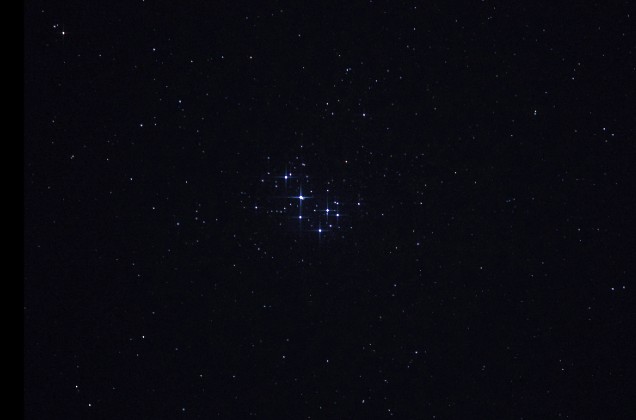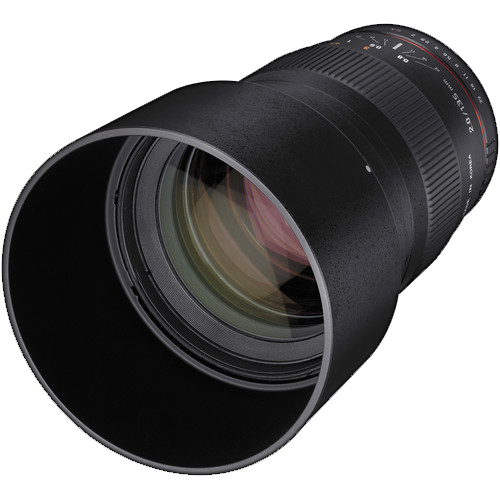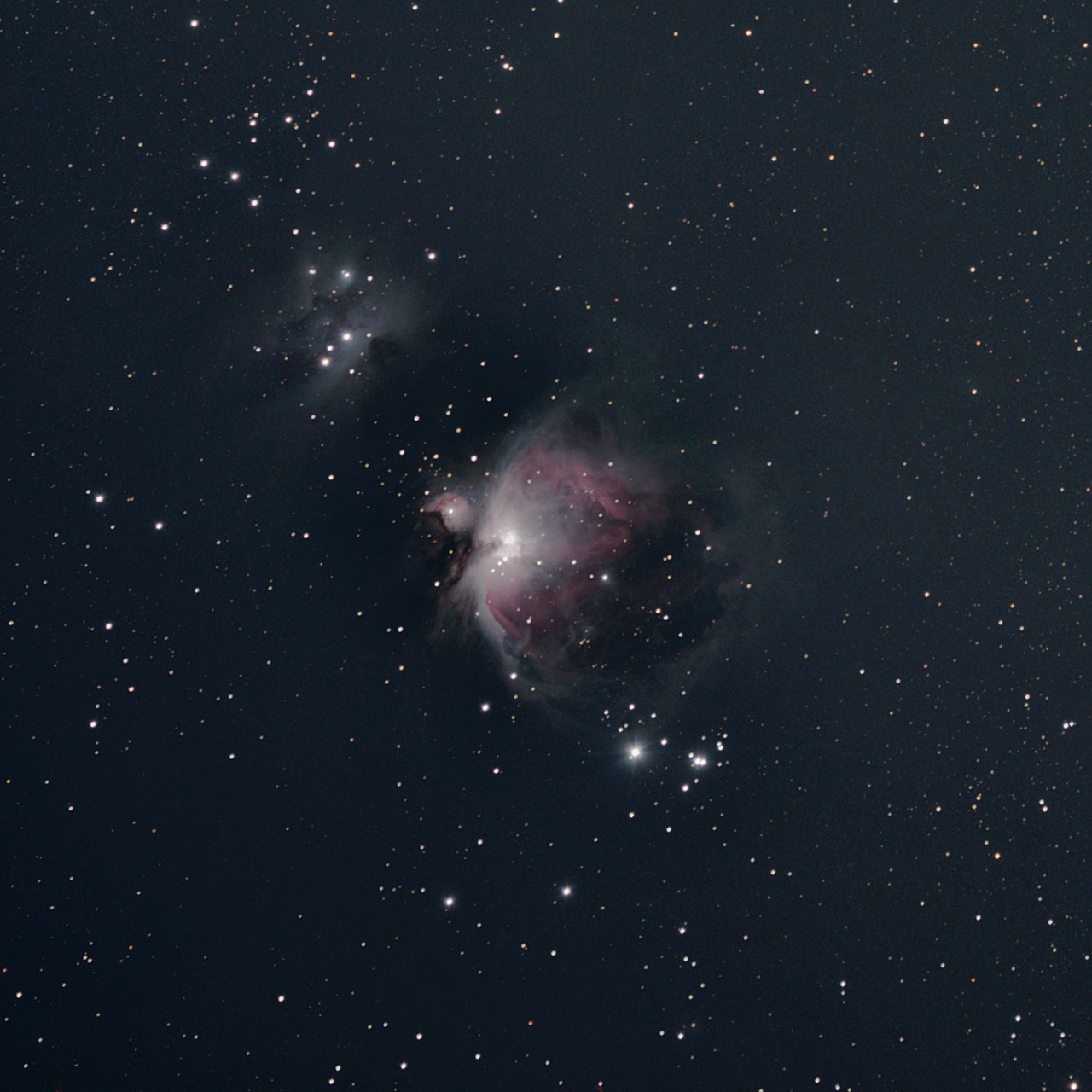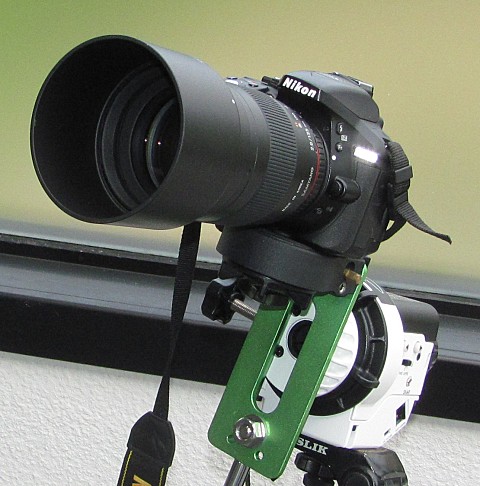Equipment Review (preliminary)
Samyang 135mm F2 ED UMC
(identical with Rokinon 135mm F2 ED UMC)
Purchase price: 480 USD
Dealer: B&H Photo, NY
Conclusion: Worth its weight in gold.
Please appreciate that this review reflects personal impressions and views.

The Samyang 135mm F2 ED UMC for Nikon F
The Nikon F version contains an 'AE-chip' which prohibits aperture control with the adjustment ring on the lens. The aperture must be turned to F22 on the lens and can be changed only after setting the top dial on the camera to "A" mode, then, using the wheel to select the f-number. Then return to "M" mode. In fact, this is not exactly "all-manual", but the advantage is that the F number is written into the image file header alongside exposure time and ISO value. A piece of electrical tape over the contacts on the lens will disable the chip entirely and grant full-manual control.
General Impression
With its 135mm focal length, this all-manual telephoto prime provides a most desirable 10° horizontal field of view with a crop sensor DSLR (APS-C) and 15° with a full frame sensor for wide field deep space photography. At maximum aperture of F2.0 short exposure times are possible yet without notable edge aberration. One of its lenses (11 elements in 7 groups) is an extra-low dispersion (ED) element to reduce the impact of chromatic aberrations (color fringes) while full Ultra Multi-Coating (UMC) considerably helps reduce flare and ghosting. With a long 200° of rotation the focusing ring has a good touch and feel, smooth and without play while holding its focus well. The lens aperture is Ø67mm, the front filter thread size is the popular Ø77mm, say, for a light pollution filter. In other words, a fine astrophoto lens.
The lens is a bargain, considering that equivalent Japanese brands of fast 135mm lenses cost more than twice the price of the Samyang (identical with Rokinon, both made in Korea), and a quarter of the price of the Zeiss 135mm f/2 (though the Zeiss is said to be superior in image quality, but 4 times?).
The Nikon F mount version includes an AE-chip for focus confirmation as well as the use of Auto/P/A/S/M shooting modes, which is a nice touch but not relevant for astrophotography. Actually, the chip can cause camera error messages in that, for astrophotography, the lens would serve safer without.
The lens is not really light-weight (about the same as its Nikon equivalent) and mounted on a DSLR, the total weight is about 1.5 to 2kg which is fine for most portable trackers. The 135mm Samyang telephoto lens is actually comparable with a fast Ø65mm ED APO refractor with built-in field flattener.

Simulated FOV with APS-C DSLR sensor (3.75° x 2.5°)

Wide aperture and fully multi-coated
If you encounter an error message saying, "Error please press the shutter button again", one thing you can try is going to the camera's custom function setting A1 and changing Autofocus to Release. Since the lens has a chip but does not have AF it maybe causing some problems on the camera. Please also check the aperture control hook on the camera's bajonet. It could be stuck and/or have lost tension.
Sample Images
The field of view in an IMX585-powered CMOS camera at 135mm is ideal for large deepsky objects, such as the Cygnus Loop, Magellanic Clouds and Andromeda Galaxy, as well as the California, Rosette, North America and Orion nebulae. A DSLR is lovely for taking images of parts of the Milky Way and of individual stars and their surrounding space.
 Lagoon & Trifid: 173 x 60 sec at F2 on Uranus-C (IMX585) | Full Screen
Lagoon & Trifid: 173 x 60 sec at F2 on Uranus-C (IMX585) | Full Screen
 M20 and M8: 50 x 60 sec at F2.4/ISO800 (Nikon D5300) | Full Screen
M20 and M8: 50 x 60 sec at F2.4/ISO800 (Nikon D5300) | Full Screen
 Sadr Region: 70 x 60 sec at F2.4/ISO800 (Nikon D5300) | Full Screen
Sadr Region: 70 x 60 sec at F2.4/ISO800 (Nikon D5300) | Full Screen
 IC 1396: 137 x 60 sec each at F2 on Uranus-C (IMX585) | Full Screen
IC 1396: 137 x 60 sec each at F2 on Uranus-C (IMX585) | Full Screen
 Cygnus Loop: 219 x 60 sec each at F2 on Uranus-C (IMX585) | Full Screen
Cygnus Loop: 219 x 60 sec each at F2 on Uranus-C (IMX585) | Full Screen
 NGC 7000: 208 x 60 sec each at F2 on Uranus-C (IMX585)| Full Screen
NGC 7000: 208 x 60 sec each at F2 on Uranus-C (IMX585)| Full Screen
 A 1280 x 1280 pixels excerpt from a 6000 x 4000 pixels DSLR image (90 x 30 sec @ISO400 at f2 but stopped down with a Ø52mm LP filter) showcases exceptional optical quality in terms of resolution.
A 1280 x 1280 pixels excerpt from a 6000 x 4000 pixels DSLR image (90 x 30 sec @ISO400 at f2 but stopped down with a Ø52mm LP filter) showcases exceptional optical quality in terms of resolution.
Pros
- Delivers truly sharp images
- Excellent low-light performance
- Low chromatic aberration
- Low flare and ghosting
- Solid metal barrel construction
- Weight (800+ gr) suits portable trackers
- Uncomplicated handling
- Attractive cost-performance ratio
Cons
- Focusing at F2 is critical (compromise for speed)
- Not weather-sealed/protected
- Nikon F version: AE-chip can cause camera error
Conclusion
Though designed for portraits without astronomy in mind this all-manual lens could as well be tailor-made for astrophotography. Comparatively low in price, it delivers sharp, contrast-rich images of the night sky with a deepsky-friendly field of view in DSLRs. Sporting an ED lens and fully multi-coating it can be considered a small, ultra-fast, wide flat field APO refractor (astrograph).



